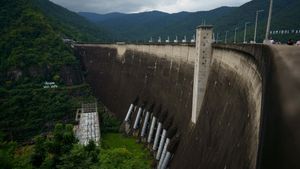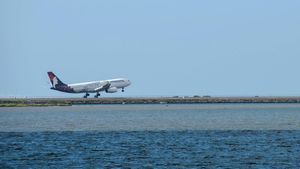Market Growth Projections: A Detailed Outlook from 2025 to 2032
Across various sectors, market growth projections are witnessing significant shifts as industries adapt to changing consumer needs, technological advancements, and regulatory environments. From machinery for powder feeding to advertising research software, forecasts indicate substantial expansion leading up to 2032.
According to the latest reports, by 2024, the global market for integrated powder feeding machines is estimated at USD 7.69 billion and is projected to reach approximately USD 15.57 billion by the end of 2032, with a compound annual growth rate (CAGR) of about 10.6%. This growth is propelled by the adoption of advanced technologies, growing global demand, and government initiatives supporting innovation.
Parallelly, the self-help health detectors market is also thriving, with current estimates of USD 15.89 billion expected to balloon to nearly USD 36.38 billion by 2032 at a CAGR of 12.57%. The enthusiasm for these products stems from their need as consumers prioritize efficient health diagnostics and monitoring solutions.
Similarly, the lane separators market forecasts indicate growth from USD 6.3 billion to about USD 12.53 billion within the same period, another indication of rising urbanization and infrastructure development contributing to increased safety measures on the roads.
For advertising software, valued at USD 14.95 billion now, projections suggest it will nearly double to USD 28.99 billion by 2032, growing consistently driven by digital transformation and constant innovation.
Key driving factors across all these markets include:
- Technological Innovation: Companies invest heavily in research and development, with many implementing artificial intelligence, automation, and advanced materials to improve product quality and efficiency.
- Demand Increase: Emerging markets, particularly China, India, and regions across Southeast Asia, are witnessing rapid industrialization and urbanization, leading to heightened consumer demand for advanced solutions.
- Regulatory Support: Government policies promoting sustainability, energy efficiency, and rigorous quality standards are incentivizing companies to innovate and adapt.
- Consumer Preference Evolution: Increasing awareness among consumers for sustainable and eco-friendly options is influencing market dynamics, pushing businesses to align offerings with these values.
Region-wise, North America remains at the forefront due to its advanced technologies and solid industrial ecosystem, where the United States and Canada collectively boost demand through substantial investments.
Europe’s matured markets, including Germany, the UK, France, and Italy, continue to set the standard for strict environmental regulations and proactive policies to support digitalization and sustainability.
Regions like Asia-Pacific are positioned for the fastest growth, bolstered by significant government investment and the area’s burgeoning consumer base, which favors increased purchasing power due to economic enhancements.
Latin America, too, is seeing positive trends driven by infrastructural projects and economic growth; led by Brazil, Mexico, and Argentina, these countries are making strides to improve their market positions.
Challenges still loom. Fluctuating raw material costs, regulatory pressures, and the need for companies to swiftly adapt to technological advancements could impact growth trajectories. Nevertheless, the opportunities presented by green technology adoption and market specialization are vast.
Expectations for market expansions across various sectors are underscored by reports stressing the necessity for companies to remain adaptable and innovative to leverage new growth potentials. For businesses aiming to capitalize on these trends, embracing change and optimizing strategies could lead to sustainable growth and competitive advantages.
With market dynamics continuously shifting, stakeholders remain advised to stay engaged with shifting trends, investing strategically where the forecasts suggest the most promise. The coming years will likely reveal new frontiers as industries evolve and consumer expectations flourish.



